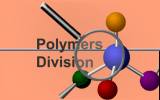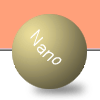| T. Wu, Y. Mei, J.C. Cabral, C. Xu and K.L. Beers, "A
New Synthetic Method for Controlled Polymerization using a Microfluidic
System" J. Am. Chem. Soc., 2004, 126, 7880-7881.
C. Xu, T. Wu, C. M. Drain, J. D. Batteas and K.L.Beers, “Microchannel
Confined Surface Initiated Polymerization" Macromolecules,
in press.
Z. Cygan, J. T. Cabral, K. L. Beers and E. J. Amis, “Microfluidic
Platform for Organic Phase Microreactors” submitted.
K. L. Beers, J. T. Cabral, H. J. Walls, E. J. Amis, “High
Throughput Measurements of Polymer Fluids for Formulations”
Proc. Mater. Res. Soc., 2004, 804, JJ7.4.1.
C. Xu, T. Wu, C. M. Drain, J. D. Batteas and K. L. Beers, “Synthesis
of Gradient
Copolymer Brushes via Surface Initiated Atom Transfer Radical
Copolymerization,” Polym. Prepr. Am. Chem. Soc. Div. Pol.
Chem., 2004,
45(2), 667.
T. Wu, Y. Mei, C. Xu and K. L. Beers, “Phase Transition
of PDMAEMA-b-PEG in
Aqueous Solution Dependence on Molecular Mass and Compositions,”
PMSE
Prepr. Am. Chem. Soc. Div. Pol. Chem., 2004, 91, 1006. |












